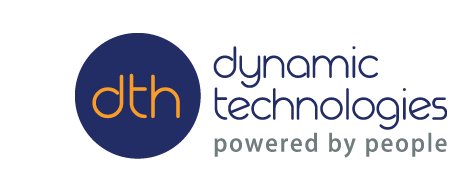The UK railway network is an economic and social artery that is relied on by millions. It is also a fast-moving entity where technology, operations and complex customer dynamics intersect, which makes software testing paramount.
According to Inspired Testing Director of Sales Bruce Zaayman: “As the railway industry continues to embrace digital transformation and new technologies like artificial intelligence (AI) and machine learning (ML), the need for robust software testing has become more critical than ever.”
Increasing demand for safety, efficiency and reliability, coupled with innovative technological advancements, are resulting in significant transformation within the railway industry. This, in turn, is driving an ever-increasing need for fast, efficient and effective software testing.
Software testing now extends to data integrity, security and analysis, making it crucial to safeguard against cyber threats and breaches while still efficiently managing data. Zaayman explains: “We’re seeing a growing reliance on software-intensive systems to manage train operations, signalling and passenger services. This necessitates rigorous testing of safety-critical software to ensure fault tolerance and resilience, addressing potential system failures that could have catastrophic consequences.”
With the emergence of AI and innovations in ML, the industry is looking to leverage these for predictive maintenance, demand forecasting and route optimisation.
“All of this points to software testers needing an innate knowledge of the railway industry, an understanding of its unique challenges and the ability to recognise opportunities to innovate,” says Zaayman. “Only then can we properly bridge the gap between railway operators’ business objectives and the end-users’ needs – all while adhering to the strict time, budget and operational constraints of the industry.”
Zaayman notes: “By adopting a test-driven development approach, leveraging test automation and addressing accessibility concerns, software developers can drive the railway industry towards safer, more efficient and more passenger-centric railway services. In this dynamic landscape, software testing isn't just a necessity, it's the linchpin that holds together the railway industry's future.”
Industry knowledge is key
The railway industry is a specialised sector with unique requirements, safety standards, regulations and operational considerations. In a survey of top rail industry professionals in the UK, Ireland and Europe, Inspired Testing learned that safety and operational efficiency are the areas most affected when software issues arise within the rail system. These issues have significant implications for passengers who depend on the rail network for their daily activities.
Incorporating third-party software testers allows flexible and scalable access to expertise that is not always available in-house. For Zaayman, the choice is simple. He says: “Third-party software testers have a range of skills and experience that would be hard to match for any business not solely focused on software testing, and engagements can be scaled up and down depending on the phase of the software upgrade cycle.”
Railway industry knowledge is crucial to successful testing for several reasons. Railway systems are safety-critical and software failures can lead to accidents and loss of life. Testers must grasp railway safety protocols, standards (such as EN 50128) and risk assessments. Regulatory understanding and compliance are vital as railway operators face oversight from agencies like the European Railway Agency. Additionally, operational knowledge and understanding of interactions and integrations with subsystems such as PRAMSS, and appropriate environmental considerations, are central.
A C-level strategy for software testing
A comprehensive testing strategy that combines multiple testing methods is often necessary to ensure safety and reliability, as is a sound understanding of the strengths and weaknesses of these testing methods.
Rail operators often face tight schedules with little room for delays. “A proven solution to this challenge centres on adopting a test-driven software development (TDD), behaviour-driven development (BDD) methodology, or, even better, a combination of both,” says Zaayman.
He also notes that test automation offers a more efficient way to conduct regression testing and expedite the delivery process, which addresses the challenges of time constraints in the railway industry. Ultimately, automation can assist in accelerating the overall test cycle and shortening the time to market. It can be run concurrently and across various environments, reducing the testing phase's duration and expediting the software's release.
Critically, but all too often neglected, user experience and accessibility and inclusiveness considerations do matter. Testers must understand operator and passenger needs for testing user interfaces and ensuring both safety and satisfaction, especially considering physically challenged or differently abled users.
A case for change
In the near future, the railway industry will see a heightened emphasis on automation and autonomous trains. Software testing will play a pivotal role in verifying the safety and reliability of autonomous systems, including collision avoidance algorithms and AI decision-making.
Software testing in the railway industry is evolving to address the complex and interconnected nature of modern rail systems. The future will see a continued focus on safety, data security, AI integration, interoperability, accessibility and automation, making skilled software testers indispensable for ensuring the reliability and efficiency of railway operations.
Share
